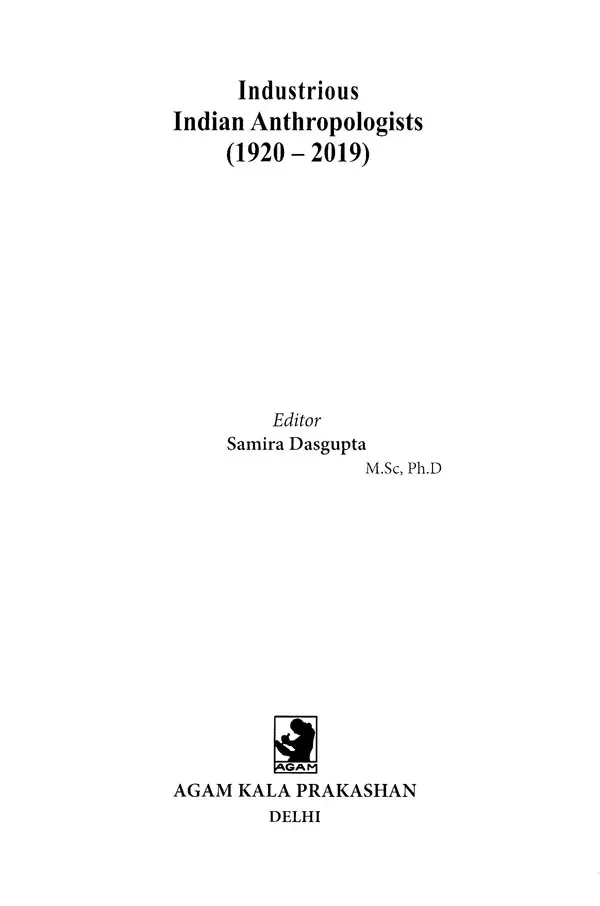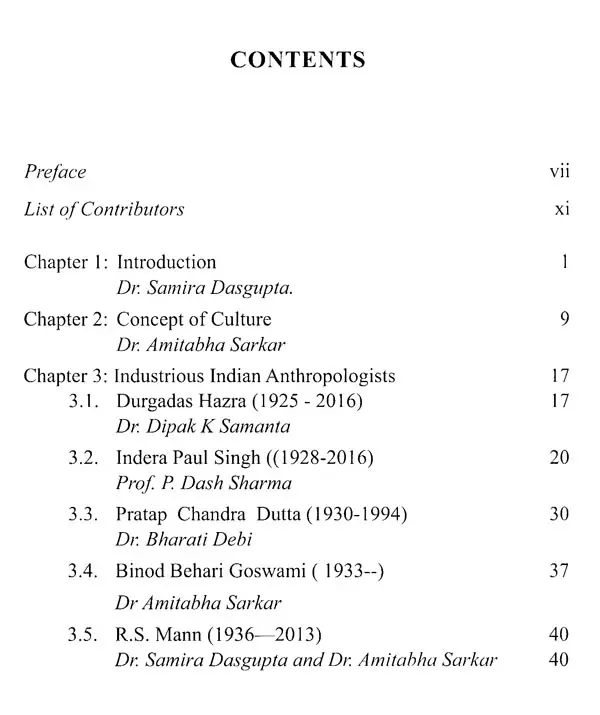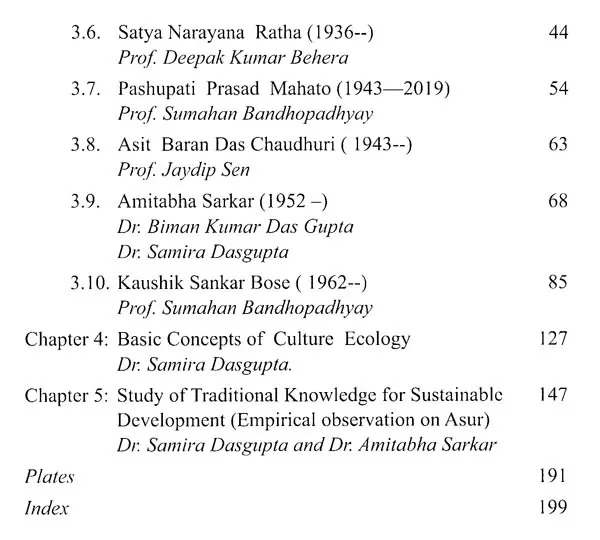
Industrious Indian Anthropologists (1920-2019)
Book Specification
| Item Code: | UAM262 |
| Author: | Samira Dasgupta |
| Publisher: | Agam Kala Prakashan, Delhi |
| Language: | English |
| Edition: | 2022 |
| ISBN: | 9788195009862 |
| Pages: | 216 (Throughout color Illustrations) |
| Cover: | HARDCOVER |
| Other Details | 9.00 X 6.00 inch |
| Weight | 480 gm |
Book Description
An anthropologist during his/her empirical study in the field the chief research methodology is participant observation. The degree to which an anthropologist is able to actually participate in community activities varies widely, depending on the rapport established, the permissiveness of the community, the temperament of the researcher and number of other local factors.
The present volume is a compilation of the contributions by the Industrious Indian Anthropologists during 1920-2019; among such industrious Indian Anthropologists only a few are presented British colonial periode. During the anthropology introduced into India in order to know the multicultural variations, diverse belief system and customary laws of the Indian natives. In spite of all such variations the Indian natives are/were harmoniously observing the ethnic boundaries and it is well respected. This is the core sentiment of the Indian civilization.
From the beginning of anthropology to till date anthropologists are very much concerned on culture; hence it is decided to include a few lines on concept of culture, few lines on Basic on Cultural Ecology through which a researcher can understand culture of a community because without theory, which is scientific, the empirical fieldwork cannot go ahead. Further, it also includes study of Traditional Knowledge for Sustainable Development especially among the Asur-a PVTG of Jharkhand.
The book will be immense helpful for the students and faculty members of various institutions and will also helpful to administrators of various states of this country for understanding the society through an thropological knowledge for execution of micro-level area planning for development of the community of an area.
Dr. (Mrs.) Samira Dasgupta (Born: 1953) is a M.Sc., Ph.D (Science) in Anthropology from the University of Calcutta. She has specialized in Cultural Anthropology and has noteworthy contributions are on culture ecology. role and status of tribal women in unorganized sector, tribal ethnography, ethno-science, religious belief system, traditional knowledge system among the tribals and cultural tourism etc. deserve for praise in academic arena being a perceptive researcher. She has published 18 (eighteen) books and more than 150 research papers in various reputed journals including contribution: in 'People of India: Bihar Volume and number of edited books of the country. She possesses 35 years research experience and carried out intensive field work among various tribal communities and weaker section of Rajasthan, West Bengal, Chhattisgarh, Odisha and Jharkhand. She is a life member of INCAA, Indian Science Congress Association. She was associated with Anthropological Survey of India from 1977 to 2013 and carried out several research projects for Anthropological Survey of India where during XIth Plan Period she was involved with the study of Tangible & Intangible Cultural Heritage Traditional Knowledge System: Ethno Medicine. She is also involved as consultant researcher and devoted in generating empirical data from tribal area of Odisha.
There are number of industrious Indian Anthropologists (1920 2019) who are/were always placed behind the curtain/screen and not even in the field of discussion about their valuable contributions in the domain of anthropology. In this long span of 100 years of Indian Anthropology they are/were always marginalized and due to such the young generation are not aware of their noteworthy contribution in anthropology. I being the Editor of this volume know that there are many more among this list, but due to some technical constraints it is not possible to include all those scholars.
Learning habits of animals in their native habitats have demonstrated that they also learn from each other and pass on a considerable. variety of skills. They have been observed to fashion simple tools from twigs, branches or blades of grass and then use them to fish, termites, which they eat, from their nests, they use rocks to break open fruits and nuts, while learning that take place in any human society is that human learning is cumulative and that of animals is not. Among humans each generation adds to the store of cultural knowledge, beliefs and techniques. The same is not true for animals as their learned traits are not cumulative.
**Contents and Sample Pages**


















